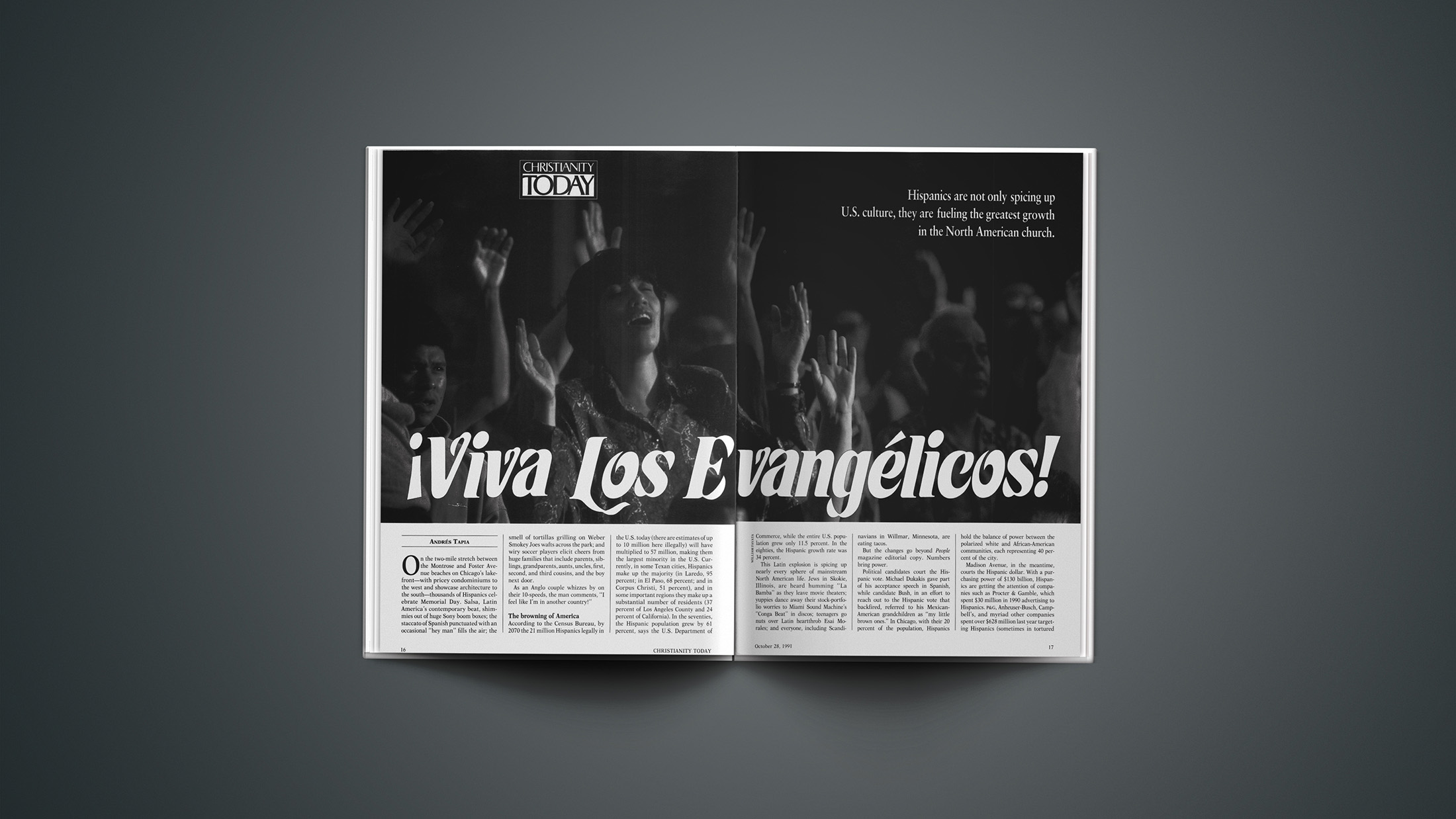A Christian Response to Immigration, Part Two

There is a classic story of the drowning man who was waiting for God to save him; a boat, a helicopter, and a canoe came by, and the man turned their help down because he was waiting for God to save him. When he finally drowns and gets to heaven, he asks God why he did not save him, and God answers, “I sent you a boat, a helicopter, and a canoe. What more did you want?” Many white evangelicals may have a similar conversation with God when they meet him. They will ask, “We had prayer weeks, and massive prayer gatherings, and hours spent alone in prayer, asking for revival, asking to see churches grow, asking to see more Christians in America. Why did we never see it?” And God will respond, “I sent you new Christians by the millions; there are new churches being planted in American by the hundreds; I have churches in America that are reaching the unchurched by the thousands. Maybe you couldn’t see them over the wall you were building to keep them out?”
The
fastest growing Christian groups in America are Hispanic churches. This has been
an established fact for about two decades. Times magazine, Christianity
Today, and NPR have all done big budget stories about it. But somehow, many
white Americans have missed it. Twenty-five years ago, more than 80% of whites
in America identified as Christian. Today, that percentage is about 65%. By
comparison more than 75% of black and Hispanic Americans consider themselves
Christians.
White evangelical churches are shrinking, especially since the last presidential election. During the late twentieth century, white evangelical numbers held steady even as mainline protestant numbers dropped. But as white evangelicals became increasingly seen as harsh, politically expedient, and money-and-power hungry, their numbers have dropped substantially from 23% of the population to 17% in just ten years. Latino and black evangelicals have not shared this drop, actually increasing in both total numbers and percentages. Latinos jumped from 7% of evangelicals to 11%.
Latino evangelicals are also responsible for a high percentage of new churches. Spanish-speaking church plants are more likely (44% to 27%) than English-speaking church plants to attract the unchurched. 80% of the pastors of these new churches were born outside of the United States. And to make white Americans just a little more uncomfortable, one in four Hispanic church plants have at least one pastor/church leader without legal status. Many Latino pastors report a major hindrance to their church’s growth is the fear that a large gathering of Latinos will prompt an ICE raid. Some of these churches have already had to figure out how to care for children separated from their parents by Immigration officials.
Latinos now make up more than a third of the American Catholic community; in 1975, whites made up nearly 90% of the nation’s Catholics. Again, as white Catholics are dying of old age or leaving the faith; Latino Catholics are increasing, shifting the epicenter of Catholicism from Italian and Irish descendants in the northeast to the American southwest. A large part of this growth is through new immigration; 28% of Catholics in this country are first generation immigrants.
Time is going to sharpen the different trajectories of white and Latino churches. White evangelicals and mainline protestants are old. Their medium age is 55 and only 11% of them are under 30-years-old. Among Hispanic protestants more than a third are under the age of 30 and another 44% are between 30 and 50. As the baby boomer generation dies off, so will many white evangelical churches. The future of these denominations will be in the hands of their brown-skinned brothers and sisters. We can only hope they will be more welcoming to the white minority than the white majority is currently to them.
Many times in its history, the church has undergone radical racial shifts. It started out as Jewish; within a generation, it was majority Gentile. The cradle of Christianity was northern Africa where great black and brown theologians and church leaders like Augustine, Cyprian, Perpetua, and Anthony gave Christianity a framework to grow into. The locus of power shifted north to Europe and east to Constantinople. Next, it came to the New World. Globally, it is shifting south again to Korea, India, Kenya, Argentina, and Brazil. In the United States, it is shifting from white to brown and black.
During that first transition, Paul wrote to the Galatian church that “you are all children of God through faith… there is neither Jew nor Gentile, neither slave nor free, nor is there male and female, for you are all one in Christ Jesus” (Gal 3:26-28). Paul’s words are as relevant today as they were in the first century. The time is coming soon when white Christians in America are going to have to chose between their desire to see God move, people saved, and churches grow and wanting to maintain their white-power, anti-immigration, English-only political positions. May we choose to see God move in a church that is “one in Christ Jesus.”
Sources
https://www.pewforum.org/religious-landscape-study/racial-and-ethnic-composition/
https://www.prri.org/research/american-religious-landscape-christian-religiously-unaffiliated/
https://www.christianitytoday.com/news/2019/july/hispanic-church-planting-survey-immigration-evangelism.html
http://lifewayresearch.com/wp-content/uploads/2019/07/Hispanic-Church-Planting-CPLF-Report.pdf


Comments
Post a Comment